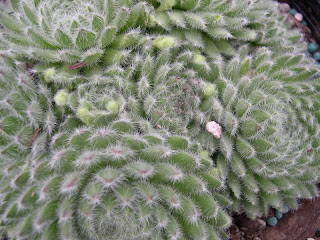


2.Temperature
Most organisms cannot stand extremes of temperatures. A temperature too high or too low would kill an organism. Many flowering plants are adapted to changing seasons. Such plants are able to withstand high and dry seasons or though winter by:
1.Storing food underground in storage organs
Water is vital to an organisms's survival. Hence, the availibility of water is a major factor affecting the number of organisms living in a particular region. However, there are some organisms that are adapted to survive under conditions where there is a limited supply of water. For e.g.: Camels are able to survive for many days without water because they can drink more that 100litres of water when available. Some plants, known as xerophytes are adapted to survive prolonged drought, harbouring the following characteristics:
1. They reduce the rate of transpiration by shedding their young leaves( Transpiration is the evaporation of water from aerial parts of the plants)/ developing leaves that are reduced to spines (reducing the surface area in which water can be evaporated from)
2.Stem becomes fleshy from storing up too much water
3.The green stems take over the function of photosynthesis from the leaves

Leaves reduced to spines!
Plants that live in water or very wet places are called Hydrophytes- Fully Submerged, Partially Submerged or Free-floating:)
Mangrove plants, such as Avicennia, have their roots burried in oxygen-poor mud. Special beathing roots called Pneumatophores project above the mud surface. Pneumatophores have pores for gaseous exchange and oxygen enters the openings and passes downwards to the whole root system.

4. Oxygen Content
Most organisms cannot survive in enviroments of low oxygen content. However, some aerobic organisms posses special adaptions that enable them to obtain sufficient oxygen. I.e.:
1)Pneumatophores in mangrove plants.
2) Fishes living in water of low oxygen content are usually air-breathes. They come to the water surface to gulp air.
5. Salinity
/Salt concentration of water is an important factor affecting the aquatic organisms. Animals living in the sea water tend to lose water to sea by osmosis as the seawater contains a > concentration of salt than the cytoplasm of the animal cells! Therefore, salwater/marine fishes have a waterproof coat ( water does not enter/exit) consisting of closely-fitting scales covered by a slimy mucous material( makes it more difficult for water to enter/exit?) , reducing water loss:)
In contrary, the cytoplasm of the cells in the freshwater organisms has a higher salt concentration than the freshwater. Hence, water enters the organisms by osmosis(causing plant cell to become turgid). The cells of freshwater plants have rigid cell wallls that prevent them from bursting. Protozoa such as the Amoeba have contractile vacuoles to remove excess water that enters by osmosis. 
 Most freshwater fishes possess slimy scaly skins which keep water from entering their cells.
Most freshwater fishes possess slimy scaly skins which keep water from entering their cells.
Additional Information: Most aquatic organisms are so highly specialised that they can only survive in certain habitats. Many freshwater organisms cannot survive in seawater and vice versa. Hence, starfishes and corals can only be found in the sea. They are not even found in brackish where seawater and freshwater mix. In brackish, the salt content can change considerably.
6.pH
Seawater is alkaline with a pH of about 8. In freshwaters, pH differs from regions to regions is ponds and streams.
okay this is so tormenting!!!!!!!!!!!!!!!!!!!!!!!!!!!!!!